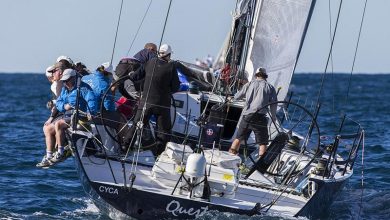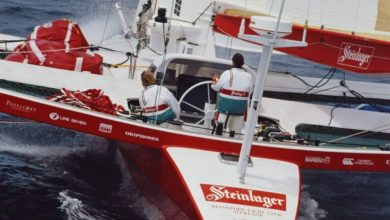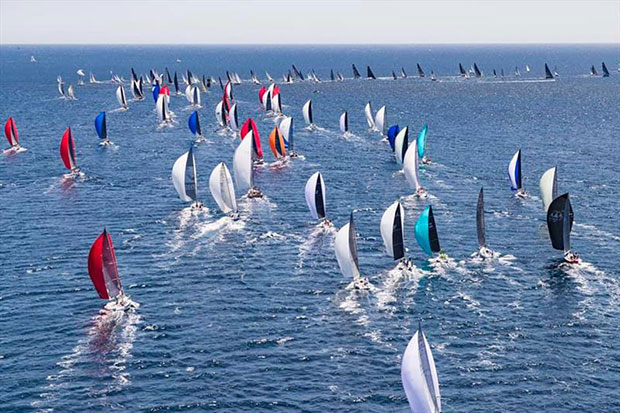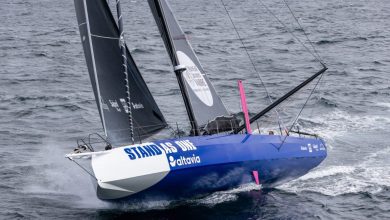The Ocean Race
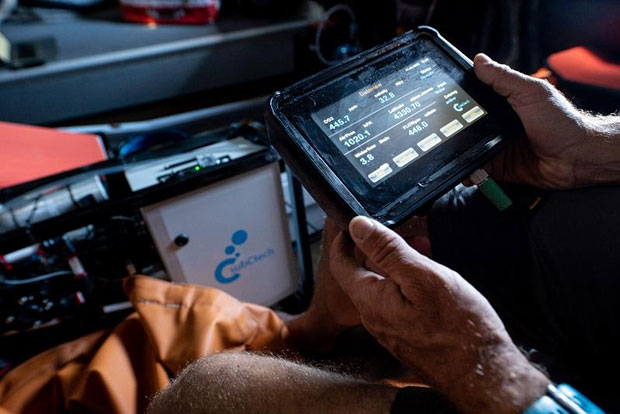
The Ocean Race, the world’s toughest, fully-crewed around the world sailing race, has enthralled and inspired a global audience since 1973.
At the same time it has provided new perspectives on the ocean that covers more than 70% of our blue planet, bringing some of the most remote corners of the Earth up close and personal for viewers around the world.
Recent years have seen a growing awareness of the challenges facing the ocean and an increasing appreciation of the fundamental role it plays in maintaining the health of the planet.
This is an issue that The Ocean Race has stepped up to address, determined to use its global platform to educate and spread the word about ocean health issues – and to promote available solutions.
With the half-centenary of The Ocean Race coming into sight over the not so distant horizon, the 2022-23 race could see a step-change in that commitment, by expanding the scientific data gathering across the fleet.
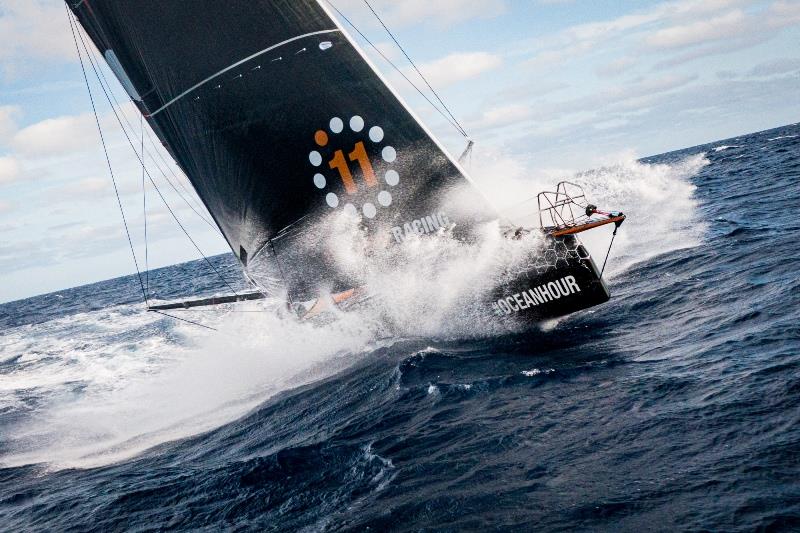 11th Hour Racing Team crossing the North Atlantic. © Amory Ross / 11th Hour Racing
11th Hour Racing Team crossing the North Atlantic. © Amory Ross / 11th Hour Racing
“We want to build on the amazing success of our award-winning Sustainability Programme during the 2017-18 edition, which led the way in terms of offshore ocean data collection by a sailing event,” said Anne-Cécile Turner, The Ocean Race’s Sustainability Director. “Everything we are doing under our new Racing with Purpose initiative, which has been developed in collaboration with 11th Hour Racing – our Founding Sustainability Partner as well as the Premier Partner of the Race – is aimed at taking that legacy and accelerating action to improve ocean health.
“The new and pioneering scientific equipment – now 30% lighter and 20% more energy efficient – is yet another example of the innovative record of onboard instrumentation and, paired with the fact that teams on The Ocean Race go deep into some of the most remote areas on the planet like the Southern Ocean, means that we are again in a unique position to contribute, this time to gather real-time scientific data to help inform decision making.”
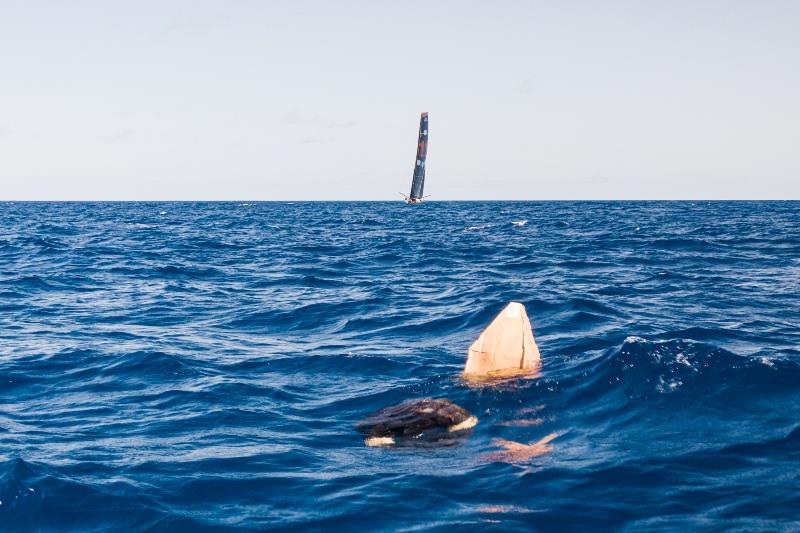
11th Hour Racing Team crossing the North Atlantic. – photo © Amory Ross / 11th Hour Racing
The latest generation oceanographic equipment in question is the OceanPack – a device which records essential ocean data from aboard the yachts. During a 14-day transatlantic crossing in August 2020, the 11th Hour Racing Team used an onboard OceanPack to sample seawater 24/7.In a first for this type of data collection from racing boats, the high-quality data was relayed in real-time, in the last edition of The Ocean Race data transfer was done on arrival in port.
During the passage from France to Newport, Rhode Island, the crew aboard the IMOCA 60 racing yacht also deployed a Drifter Buoy in a target area where there is a gap in buoy coverage for long-term real-time monitoring of ocean conditions. These are particularly valuable contributions given the dramatically reduced opportunities to collect data and deploy monitoring equipment during COVID19 restrictions.
VIDEO — Hear from 11th Hour Racing Team sailor Simon (SiFi) Fisher as he explains from the middle of the Atlantic Ocean how sailors can assist scientists with data collection far offshore
The data from each device plays a crucial part in helping scientists assess the health of the ocean. Given that the ocean generates up to 80% of the world’s oxygen – even more than the ‘green lungs’ like the Amazon rainforest – it has a direct bearing on the health of the whole planet.
The OceanPack records three types of essential ocean data: sea surface temperatures, an important indicator of climate change; salinity levels, which influence currents and water circulation and have a direct impact on CO2 absorption; and levels of dissolved CO2 in the water, which is linked to global emission rates as well as having a potentially damaging impact on species such as sea urchins, crustaceans and coral.
As before, the information was fed into global databases including the National Oceanic and Atmospheric Administration (NOAA, effectively NASA for the ocean), the Surface Ocean CO2 Atlas (SOCAT) and European Marine Observation and Data Network (EMODnet). From these databases the data remain indefinitely useful for the scientific community to continually improve models and predictions related to ocean health.
Outlining the importance of such data Dr. Peter Landschützer, from the Max Planck Institute for Meteorology in Hamburg, Germany, said: “Our planet experiences vast changes due to human CO2 emissions. The ocean provides an immense ecosystem service to humanity by taking up about a quarter of all annual CO2 emissions, yet this excess uptake alters the chemical composition of the ocean. In order to understand, predict or project these changes we need to monitor the ocean today. Sailing events like The Ocean Race are a promising way forward in expanding the observational network and obtaining measurements of the sea surface partial pressure of CO2.”
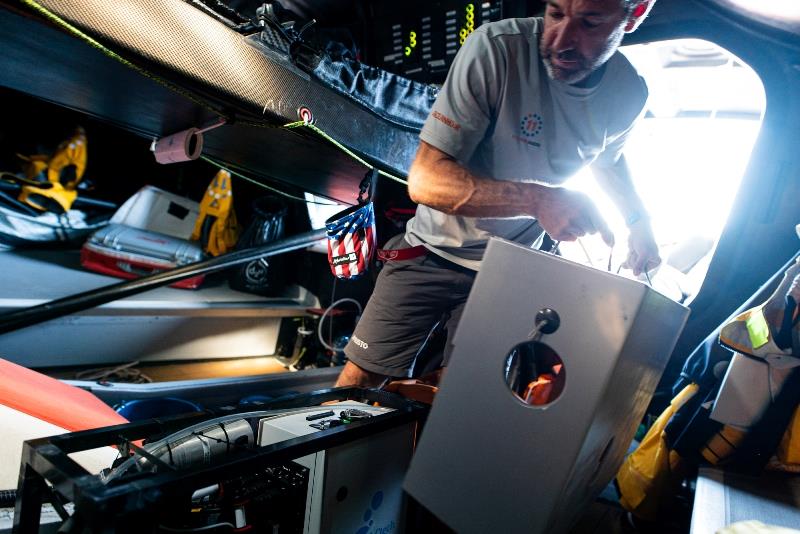
11th Hour Racing Team crossing the North Atlantic. – photo © Amory Ross / 11th Hour Racing
The deployed Drifter Buoy is operated by Météo France who upgraded the buoy to record and transmit barometric air pressure readings – key to tracking and predicting storms and hurricanes – as well as sea surface temperatures and position, which adds to the understanding of ocean circulation and climate change.
The latest deployment will build on the success of previously deployed buoys, some of which are still transmitting data as part of the NOAA managed Global Drifter Program.
“With over 30 drifting buoy deployments over the last two editions of The Ocean Race it is clear that scientific programmes in ocean racing are no longer just a little side project, they are significant contributions to marine scientific research and forecasting”, said Martin Kramp from OceanOPS, a joint coordination centre of the World Meteorological Organisation (WMO) and Intergovernmental Oceanographic Commission (IOC).
And referencing the contribution of the OceanPacks he added: “The under way instrumentation installed on some of the boats is highly innovative and provides good data, for example salinity, temperature and carbon. In particular from ocean areas where we have no regular shipping, like in the Southern Ocean, these data are of really high value. Having access to the data in real-time allows us to fine-tune weather models which helps make storm forecasting and other extreme weather phenomena more accurately”.
The Ocean Race Science programme will be in the spotlight later today, on October 29th, at the latest Innovation Workshop, one of the virtual seminars designed to complement The Ocean Race Summits series.
Entitled ‘Communicating Ocean Science with Impact’, the workshop will bring together experts to further explore ways of highlighting ocean science and what the data are telling us about ocean health. In keeping with the spirit of collaboration and teamwork that The Ocean Race embodies, the workshop will engage a diversity of participants all bringing different perspectives and expertise to achieve the common goal of accelerating ocean health restoration.
by The Ocean Race

